Black Tears, Blue Fears
LaDonna Williams, Environmental Justice Activist, All Positives Possible
Annisia Williams, Undergraduate Student, Solano Community College
Paris Milan, Undergraduate Student, Solano Community College
Alfonso Aranda, Graduate Student, UC Davis
Dr. Julie Sze, Professor, UC Davis
Dr. Javier Arbona, Assistant Professor, UC Davis
Abstract
Our case study examines Vallejo — a site of California’s troubled history of racial discrimination and violence. Black Tears refers to the effects of constant segregation, police brutality, and political corruption. Blue Fears relates to the chronic health problems Vallejoans experience as a result of living near industrial sources of pollution, compounded by the political inaction and regulatory noncompliance that perpetuates environmental racism. Altogether, our collection of interviews and analyses can be described as a firsthand account of what it means to be Black in Vallejo: our story, our pain, and our vision. “Black Tears/Blue Fears” is a collaboration between LaDonna Williams and her colleagues from All Positives Possible, a Black community based organization in South Vallejo and American Studies Professors Julie Sze and Javier Arbona, with assistance from Alfonso Aranda, a graduate student of UC Davis.
Project Narratives
Introduction
Vallejo, CA, can be a warm and welcoming Bay Area community for everyone except its Black residents. By examining this dynamic, our case study illustrates America’s ongoing commitment to anti-Blackness in the form of police violence and environmental injustice. We further contextualize these challenges within the legacies of slavery and segregation and the effects of racism as manifested in present-day economic, health, and judicial inequalities. While Black Vallejoans experience police violence, political corruption, and contamination through air, water, and soil, we remain witness to America’s willingness to support policies that address perceived wrongs orchestrated against non-Blacks. We therefore demand an end to these blatant double-standards and political oppressions because divide-and-conquer strategies ultimately serve the interests of the powers that be.
Black Tears/Blue Fears offers a glimpse into the life of Black Vallejoans from the perspective of Black Vallejoans. Until now, Vallejo’s troubled history of racial discrimination — which denied an African American the right to become a public school teacher until 1949 (with countless Black lives sacrificed to make it happen) — is largely hidden from public view. These histories include Vallejo’s painful legacy of white privilege coupled with police brutality and terrorism. Our case study seeks to illuminate these stories by refocusing political attention on the physical and psychological suffering of Black Vallejo residents. Black Tears refers to the effects of constant segregation, police brutality, and political corruption. Blue Fears relates to the chronic health problems we experience as a result of living near industrial sources of pollution, exacerbated by political inaction and regulatory noncompliance that perpetuate environmental racism. It is a multimedia collaboration that collects and narrates present life narratives of key African American community leaders from Vallejo. These include elders such as Pat Dodson, retired engineer and 79- year-old lifelong Vallejo resident. This Project comes from the ground up from the perspective of Black residents of Vallejo, specifically All Positives Possible —, a Black community- based organization in South Vallejo, California. It is also a collaboration between community leaders and UC Davis Professors Julie Sze and Javier Arbona (American Studies), Alfonso Aranda, ( Geography Graduate Student)
Broadening the View
This multimedia video project took on the major challenges the community faces: the ability to frame these issues in a comprehensive manner is our most pressing concern because we operate in an environment designed to minimize and ignore our struggles — even among other Black Americans. Despite these challenges, our team of community women (and crew) have been successful. For example: we organized to stop a cement plant from being built in the poorest area of South Vallejo, we prevented the deep dredging of Carquinez Strait by the Army Corps of Engineers that would have resulted in toxic spills in the southern part of the city, and we forced the Center for Disease Control to ration COVID-19 aid by race on account of the increased disease burden we suffered as a community. Lastly, we worked through institutional limitations imposed by UC Davis to fund our collaboration.
Sharing the Stories
After production, the community is more open to tell our story, as it is done under our terms. We believe in the importance of community ownership and authorship over the materials that academics have traditionally extracted from us. The issues we face are more pressing than the content in scholarly journals, so we need platforms such as Imagining America to rally support for our causes. We expect our case study to elevate marginalized and disadvantaged communities within and outside the Bay Area, and it was helpful to work with a team of professors and students to tell the stories that best reflect our efforts.
True partnerships between community partners and academics can be uncomfortable. Despite the UC Davis team having direct experience working with community-based organizers (in Knights Landing, Central Valley and New York City), as well as understanding the histories of anti-black racism in Vallejo from a research standpoint, those experiences are not necessarily enough to build trust when inequities in power and knowledge production are built into the system of contract and grants. For example, when Sze directed the Environmental Justice Project over a decade ago, Williams had a major problem with the university researcher and filed a grievance with the University. As individuals, Sze and Williams were able to build back interpersonal trust over time, with the hurdle of this history of extractive relationships. For the current project, the university assumes that all “research products” belong to the university. As a team collectively, we rejected that language and simply put that the research belongs where it should be- with the community. This story is not to self- inflate ourselves. Rather, we are highlighting where there has been conflict in the systems of knowledge production in the past and in the present project.
Conclusion
Real change is uncomfortable. On a micro-level, we tried to do this in the project by framing the histories over time and making sure our stories are at the core of the work. At the same time, change is simple — it happens by simply looking within you when an injustice occurs, and asking yourself what you want to happen. In order for America to reverse its anti-Blackness agenda, we must first address the historical problems experienced by Black Americans. That is why we believe reparations must be paid to the African American descendents of slavery for the criminal exploitation of our ancestors. More than 400 years of slavery and segregation in the Black community must be atoned for. This conviction stems from our desire to see changes for Black Americans, and we hope our case study can become a catalyst for the world we envision.


